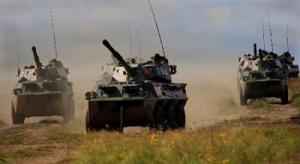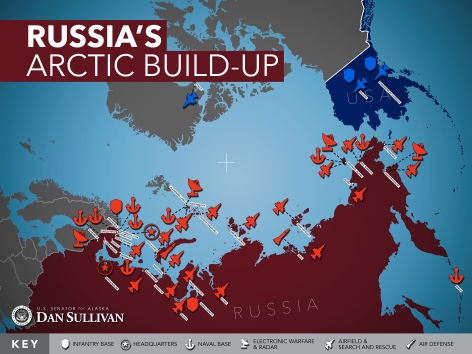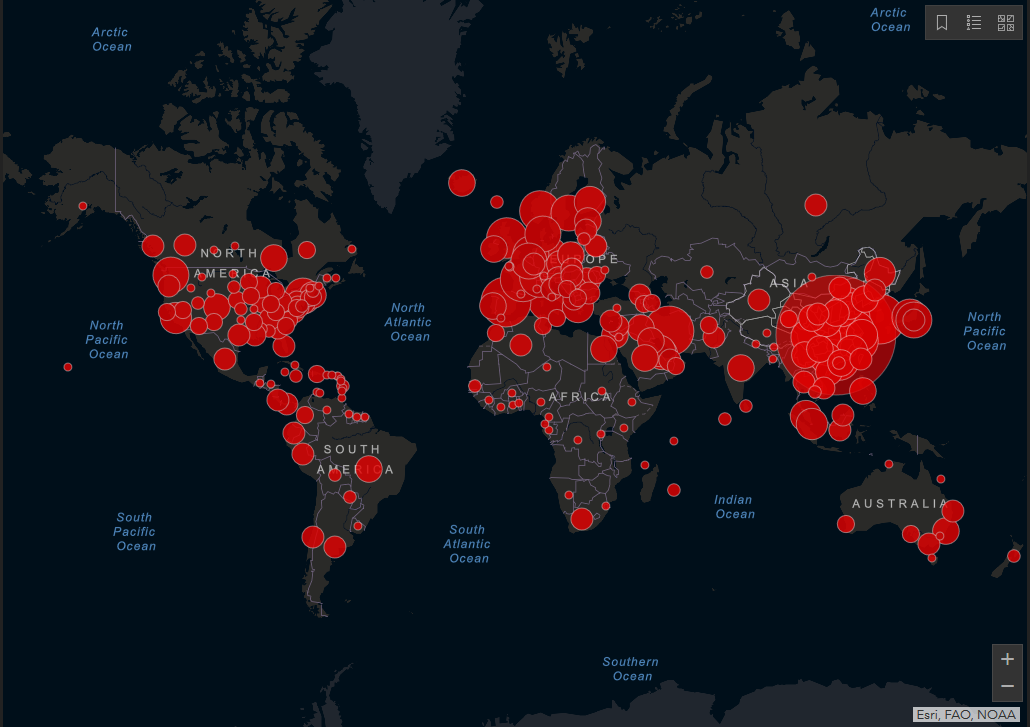> The Shanghai Cooperation Organization is the organizational embodiment of the Moscow-Beijing Axis, Eurasia’s new communist bloc. Iran holds observer status and has applied for full membership. Both the Iranian President Mahmoud (“Iwannajihad”) Ahmadinejad and Afghan President Hamid Karzai attended the Bishkek summit this week. Nearly all of the heads of state/government present were communists, “ex”-communists or communist stooges. State-run Novosti observed that Ahmadinejad’s presence at the event clearly revealed that the SCO summit was an “anti-NATO event.” The Don of the Iranian Mafia warned: “The United States’ plans to deploy elements of a missile defense system around the world are threatening not just one country, but also the entire Eurasian continent, Asia and members of the Shanghai Cooperation Organization.”
The Shanghai Cooperation Organization is the organizational embodiment of the Moscow-Beijing Axis, Eurasia’s new communist bloc. Iran holds observer status and has applied for full membership. Both the Iranian President Mahmoud (“Iwannajihad”) Ahmadinejad and Afghan President Hamid Karzai attended the Bishkek summit this week. Nearly all of the heads of state/government present were communists, “ex”-communists or communist stooges. State-run Novosti observed that Ahmadinejad’s presence at the event clearly revealed that the SCO summit was an “anti-NATO event.” The Don of the Iranian Mafia warned: “The United States’ plans to deploy elements of a missile defense system around the world are threatening not just one country, but also the entire Eurasian continent, Asia and members of the Shanghai Cooperation Organization.”
In keeping with the Kremlin’s energy imperialism, the Kazakh President Nursultan Nazarbayev submitted a draft strategy for forming an SCO oil and gas cartel that would surplant OPEC. The Iranian president seconded the motion. Russia and Iran, as the article below reports, have the world’s first and second largest reserves of natural gas.
The so-called Bishkek Declaration, which emerged from the meeting moreover, states: “The SCO heads of state believe that stability and security in Central Asia can be ensured primarily by the regional states themselves, through existing regional associations.” In other words: Moscow-Beijing Axis to USA: Get out of Dodge (Central Asia). The stage is now set for the world’s revived Communist Bloc to confront the West for its “transgressions” against global stability.
Even though Russia is the world’s most experienced terrorist-sponsoring regime, the declaration also pledged the SCO to combating “terrorism, separatism and extremism in Eurasia.” Good luck!
Lastly, dovetailing with the SCO’s supposed “humanitarian mission,” Putin proposed the formation of the Shanghai Cooperation Organization University. “In this context the creation of the SCO University is a very important theme. The university would comprise a network of educational institutions with coordinated curriculum,” the neo-Soviet dictator urged. Can you say “SCO U?”
Unprecedent security measures to guard the summit from disruption included the grounding of aircraft utilizing the nearby US military base, located at the Bishkek airport since 2001.
Pictured above: Chinese Tyrant Hu Jintao and neo-Soviet Tyrant Vladimir Putin greet each other at the Bishkek Summit of the SCO. Pictured below: Iranian Mafia Don Ahmadinejad and Hu in photo op.
Wrap: Regional security summit vows to ensure stability in Asia
17:1716/ 08/ 2007
BISHKEK, August 16 (RIA Novosti) – Central Asian states can ensure regional stability and energy security without outside assistance, leaders of the six Shanghai Cooperation Organization (SCO) countries said at a summit in Kyrgyzstan Thursday.
The SCO comprises Russia, China, Kazakhstan, Kyrgyzstan, Tajikistan and Uzbekistan, and has Iran, India, Pakistan and Mongolia as observers. The bloc, which primarily addresses security issues, is seen by many as a counterbalance to U.S. influence in the region.
Participants of the summit in the Central Asian nation’s capital, Bishkek, signed eight documents, including a Treaty on Friendship and Cooperation, a Bishkek Declaration, a joint communique, and a plan of action to ensure international information security.
The leaders said in the declaration: “The SCO heads of state believe that stability and security in Central Asia can be ensured primarily by the regional states themselves, through existing regional associations.”
 Regional security and counter-terrorism
Regional security and counter-terrorism
The document also said the organization’s regional antiterrorism structure had sufficient resources to fight terrorism, separatism and extremism in Eurasia. Member states pledged to push forward with creating a joint mechanism to counter threats to regional peace, stability and security, and to deepen cooperation in fighting drug trafficking and illegal migration.
Russian President Vladimir Putin proposed conducting holding regular counter-terrorism exercises, similar to the drills now underway in Russia.
The six countries’ armed forces have been taking part in the Peace Mission 2007 exercises in Russia’s south Urals since August 9. Leaders of the SCO member states are expected to attend the final day of drills Friday.
President Putin told the SCO Council of Heads of State, “As you know, the exercises are being conducted successfully, and are demonstrating growing technical potential and a good coordination level among units. It is therefore worth considering regularly holding such exercises on the territories of different Shanghai Cooperation Organization countries.”
The Russian leader said the world needed a multi-polar system for international security, and spoke out against attempts by any one nation to take global security into their own hands.
“Russia, like other SCO states, favors strengthening the multi-polar international system providing equal security and development potential for all countries. Any attempts to solve global and regional problems unilaterally have no future,” he said.
Afghanistan and the drugs trade
Putin also proposed setting up financial security belts around Afghanistan to counter money laundering, and holding a special security conference on the country.
“It is essential to continue forming anti-drug security belts around Afghanistan, which could be complemented with financial security belts supervised by SCO financial monitors,” Putin said. “This will improve the effectiveness of measures to counter both drug trafficking and money laundering.”
The Russian president said that since all SCO member states were interested in ensuring stability in Afghanistan, a special conference should be held to discuss means of helping the volatile country. He proposed that SCO countries’ foreign ministers make corresponding preparations.
According to the World Drug Report, Afghanistan accounts for more than 90% of the world’s illegal opium production, which is used to produce heroin.
Afghan President Hamid Karzai was present at the summit, which took place two days after his bilateral meeting in Kabul with another summit guest, Iranian President Mahmoud Ahmadinejad.
Karzai called on the organization to prioritize measures against drug-trafficking, a major source of terrorist financing.
“We understand well enough the negative effect of the drugs problem on all countries in the region… It is necessary to work out a specific regional plan to fight the problem,” the Afghan leader said.
He said his country, where attacks on security forces by Taliban insurgents have escalated in recent months, was ready to step up cooperation in countering narcotics and terrorism.
The day before the summit, several bilateral meetings were held, including talks between Chinese President Hu Jintao and Iran’s Mahmoud Ahmadinejad, and a meeting between Putin and the summit’s host, Kyrgyz President Kurmanbek Bakiyev.
 United States missile shield plans
United States missile shield plans
Iranian President Mahmoud Ahmadinejad, whose presence at the event added to its image as an anti-NATO event, told the summit that the deployment of a U.S. missile defense elements in Central Europe threatens not only Iran but also the whole of Eurasia.
The U.S. announced in January plans to place a radar and a host of interceptor missiles in Poland and the Czech Republic to fend off what Washington sees as an impending missile threat from “rogue states”, including Iran.
United States plans “to deploy elements of a missile defense system around the world are threatening not just one country, but also the entire Eurasian continent, Asia and members of the Shanghai Cooperation Organization [SCO],” Ahmadinejad said.
Russia has strongly opposed the U.S. missile shield plans, saying Washington has no justification for deploying a missile defense system in Europe until there is conclusive evidence showing that Iran has the capability to launch long-range nuclear-armed missiles.
Ahmadinejad called for closer cooperation between members of the so-called Shanghai Six on a variety of global challenges, including drug-trafficking, terrorism and organized crime.
The Iranian leader arrived in Kyrgyzstan after visits to nearby Afghanistan and Turkmenistan, where he met with the countries’ presidents, Hamid Karzai and Gurbanguly Berdymukhammedov, who was also a guest at the summit.
At his bilateral meeting with Hu Jintao the previous day, Ahmadinejad had thanked the Chinese leader for his country’s support in the ongoing international dispute over Iran’s nuclear program.
Oil and gas cooperation
Addressing SCO leaders, the president of oil-rich Kazakhstan proposed creating an oil and gas regulating body and exchange to service member states.
Nursultan Nazarbayev presented a draft of strategy for creating an SCO oil and gas club, an idea which has been considered since February.
“The draft Asian energy strategy envisions the establishment of an SCO energy agency, which would be a type of ‘brain center’ and database, while transactions on the market for energy resources could be made through an SCO energy bourse,” Nazarbayev said.
The ex-Soviet state’s president said that forming an oil and gas club was one of the pivotal ideas for the SCO, and that the existing pipeline system linking Russia, Kazakhstan, Central Asia and China, could serve as a basis for establishing a uniform SCO market.
President Putin also spoke in favor of greater fuel trade cooperation, saying this could give provide an impetus for regional projects. “I am sure that the initiated energy dialogue and accompanying national energy strategies, as well as the establishment of an energy club, will set the priorities for our further cooperation,” Putin said.
President Ahmadinejad, whose country has the world’s second largest natural gas reserves behind Russia, reiterated his proposal to hold a meeting of SCO energy ministers.
Iran proposed in January establishing an international gas cartel similar to OPEC. Plans are still at the discussions stage, but have already angered the West, in particular the United States.
The ministers’ meeting would “optimize cooperation in transportation, prospecting, development and refining. As before, Iran is ready to organize such a meeting,” he said.
Security measures at the summit
In advance of the summit in the mountainous Central Asian republic, attended by around 1,500 foreign diplomats and journalists, unprecedented security measures were put in place. From Monday Bishkek’s only airport, Manas, was closed to all flights except those of delegations. Planes from the United States military base, located at the airport since 2001, were also banned from flying.
More than 5,000 police were deployed to guard the event, and guard helicopters hovered over the leaders’ vehicles as they passed through the city. All private taxis in Bishkek have been temporarily banned, and all alcoholic drinks have been removed from shelves of shops and kiosks in the city’s main thoroughfares. Residents of other Kyrgyz cities have been refused entry to the capital since August 10.
Source: Novosti





































































 Pictured here: Two Jesuit-educated advocates of “social justice”:
Pictured here: Two Jesuit-educated advocates of “social justice”: 








 Moltenskoi stressed that the activities of the SCO countries’ armed forces are conducted “within the framework of national and international law.”
Moltenskoi stressed that the activities of the SCO countries’ armed forces are conducted “within the framework of national and international law.”










